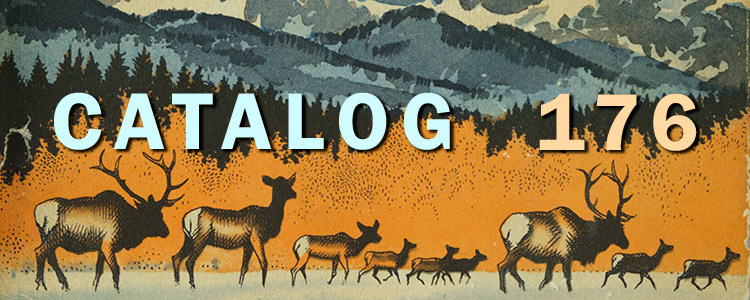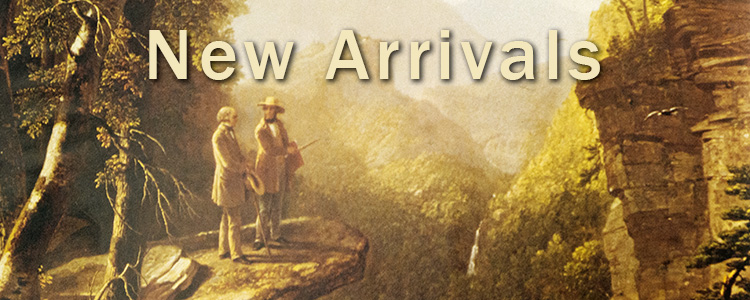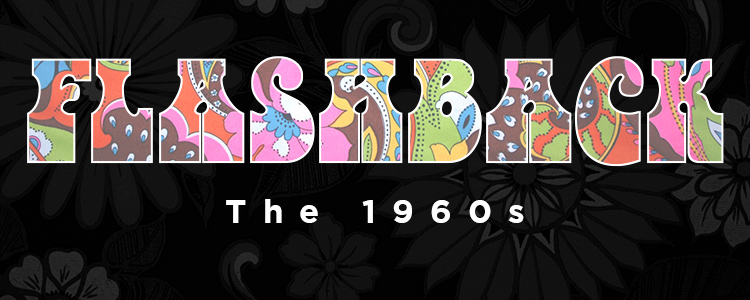 Subscribe
Subscribe
E-list # 172
Flashback: 1960s
(KESEY, Ken)
TANNER, Tony
(London), (London Magazine), (1969). A piece on Kesey and the Merry Pranksters. Near fine in wrappers.
[#028783]
$20
TAYLOR, Peter
 NY, Farrar, Straus & Giroux, (1969). A review copy of this collection by an author whose reputation has been built largely on the strength of his stories and who won, in the last years of his life, both the Pulitzer Prize and the PEN Faulkner Award. Inscribed by the author in 1990: "For ___ ___/ with all good wishes/ and with much appreciation/ for the cordial and the kind/ words of your letter./ Peter Taylor." Spotting to top stain; else fine in a near fine dust jacket.
[#021357]
SOLD
NY, Farrar, Straus & Giroux, (1969). A review copy of this collection by an author whose reputation has been built largely on the strength of his stories and who won, in the last years of his life, both the Pulitzer Prize and the PEN Faulkner Award. Inscribed by the author in 1990: "For ___ ___/ with all good wishes/ and with much appreciation/ for the cordial and the kind/ words of your letter./ Peter Taylor." Spotting to top stain; else fine in a near fine dust jacket.
[#021357]
SOLD
(THOMPSON, Hunter S.)
 (Chicago), (Macfadden-Bartell), 1965. A fairly tame piece (for Thompson) on the gentrification of Big Sur, two years prior to his first book. September issue. Thompson had written to Pageant in 1964, seeking a new outlet for his writing; the digest-size magazine was a competitor to Reader's Digest and it paid well, and Thompson had several pieces published there over the next few years, including his first piece about Richard Nixon. This piece was partly an update of his first magazine feature, written in 1961 for Rogue magazine, a competitor of Playboy. Small date stamp front cover, very slight rubbing to rear cover; else fine in wrappers.
[#030837]
SOLD
(Chicago), (Macfadden-Bartell), 1965. A fairly tame piece (for Thompson) on the gentrification of Big Sur, two years prior to his first book. September issue. Thompson had written to Pageant in 1964, seeking a new outlet for his writing; the digest-size magazine was a competitor to Reader's Digest and it paid well, and Thompson had several pieces published there over the next few years, including his first piece about Richard Nixon. This piece was partly an update of his first magazine feature, written in 1961 for Rogue magazine, a competitor of Playboy. Small date stamp front cover, very slight rubbing to rear cover; else fine in wrappers.
[#030837]
SOLD
TIEDE, Tom
NY, Trident, (1968). "The story of a young draftee who refuses to fight in a war he cannot believe in." Review copy with photo laid in. Fine in a near fine, modestly edgeworn dust jacket with one small spot of rubbing on the spine. The author, a reporter, wrote most of this book while on assignment in Vietnam. An early novel to have a distinctly antiwar theme.
[#010264]
SOLD
TOFFLER, Alvin
 NY, Random House, (1970). A review copy of Toffler's massively successful book naming the disorientation caused by the accelerated pace of cultural and technological change. Laid in are three different 2-legal-page press releases: "Future Shock May Be Key Disease of Tomorrow," "Movement for 'Responsible Technology' Needed to Combat Future Shock," and "To Prevent Future Shock, Schools Must Teach About Tomorrow." From the first: "When people complain they can't cope, what is it they can't cope with?" From the second: "... technological questions can no longer be answered in technological terms alone. 'They are political questions...we need a machinery for screening machines.'" From the third: "Today events are moving so swiftly that only another [post-John Dewey] radical shift in our 'time-bias' can save our children. The schools must develop future-consciousness." The press releases are folded in fourths; the book has mild edge-foxing and is near fine in a very near fine dust jacket with a shallow crease to the rear panel. Uncommon in the first edition, with jacket, and with promotional material. A book so correct in its premises that it now seems almost quaintly outdated.
[#032329]
SOLD
NY, Random House, (1970). A review copy of Toffler's massively successful book naming the disorientation caused by the accelerated pace of cultural and technological change. Laid in are three different 2-legal-page press releases: "Future Shock May Be Key Disease of Tomorrow," "Movement for 'Responsible Technology' Needed to Combat Future Shock," and "To Prevent Future Shock, Schools Must Teach About Tomorrow." From the first: "When people complain they can't cope, what is it they can't cope with?" From the second: "... technological questions can no longer be answered in technological terms alone. 'They are political questions...we need a machinery for screening machines.'" From the third: "Today events are moving so swiftly that only another [post-John Dewey] radical shift in our 'time-bias' can save our children. The schools must develop future-consciousness." The press releases are folded in fourths; the book has mild edge-foxing and is near fine in a very near fine dust jacket with a shallow crease to the rear panel. Uncommon in the first edition, with jacket, and with promotional material. A book so correct in its premises that it now seems almost quaintly outdated.
[#032329]
SOLD
TYLER, Anne
 NY, Knopf, 1970. A review copy of her third book, a rock and roll novel focused on an alienated teenage girl in an unlikely romantic relationship with a small-time rock singer. A 1999 film adaptation won two film festival prizes and was nominated for the Grand Jury Prize at the Sundance Film Festival. Fine in a near fine dust jacket with trace foxing to verso, with review slip laid in. A very attractive copy of this early Anne Tyler novel.
[#030843]
SOLD
NY, Knopf, 1970. A review copy of her third book, a rock and roll novel focused on an alienated teenage girl in an unlikely romantic relationship with a small-time rock singer. A 1999 film adaptation won two film festival prizes and was nominated for the Grand Jury Prize at the Sundance Film Festival. Fine in a near fine dust jacket with trace foxing to verso, with review slip laid in. A very attractive copy of this early Anne Tyler novel.
[#030843]
SOLD
TYLER, Anne
 NY, Knopf, 1965. Her second novel, a powerful and moving story of a young boy coming to terms with his little sister's death. A little foxing to top stain; else fine in a near fine, price-clipped dust jacket with a couple faint spots and rubbing to the spine. A very nice copy.
[#024212]
$1,500
NY, Knopf, 1965. Her second novel, a powerful and moving story of a young boy coming to terms with his little sister's death. A little foxing to top stain; else fine in a near fine, price-clipped dust jacket with a couple faint spots and rubbing to the spine. A very nice copy.
[#024212]
$1,500
(Underground Press)
 (NY), (National Emergency Civil Liberties Committee), March, 1970. David Levine caricature of Spiro Agnew on the cover. Slight edge-darkening; still fine.
[#029898]
$20
(NY), (National Emergency Civil Liberties Committee), March, 1970. David Levine caricature of Spiro Agnew on the cover. Slight edge-darkening; still fine.
[#029898]
$20
(Underground Press)
 (Southampton), Student Free Press, (1969). High school underground student newspaper, with rules for demonstrations from SDS, antiwar poems, articles on Acapulco Gold and smoking catnip, a head shop ad (The Freedom Store) and more. Six pages; one corner staple; corner crease; near fine. Scarce 60s ephemera.
[#029896]
SOLD
(Southampton), Student Free Press, (1969). High school underground student newspaper, with rules for demonstrations from SDS, antiwar poems, articles on Acapulco Gold and smoking catnip, a head shop ad (The Freedom Store) and more. Six pages; one corner staple; corner crease; near fine. Scarce 60s ephemera.
[#029896]
SOLD
UPDIKE, John
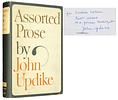 NY, Knopf, 1965. His first collection of nonfiction, short pieces from The New Yorker and a number of other publications, collected the year after Updike won the National Book Award and was elected to the National Institute of Arts and Letters. Inscribed by the author: "For ___ ___/ Best wishes to a former Beverlyite/ John Updike." Foxing to foredge and cloth, thus very good in a very good dust jacket, which is also foxed, predominantly on verso. Most of the signed copies of this title that show up have been signed on a tipped-in leaf. Inscribed copies are uncommon.
[#030159]
$175
NY, Knopf, 1965. His first collection of nonfiction, short pieces from The New Yorker and a number of other publications, collected the year after Updike won the National Book Award and was elected to the National Institute of Arts and Letters. Inscribed by the author: "For ___ ___/ Best wishes to a former Beverlyite/ John Updike." Foxing to foredge and cloth, thus very good in a very good dust jacket, which is also foxed, predominantly on verso. Most of the signed copies of this title that show up have been signed on a tipped-in leaf. Inscribed copies are uncommon.
[#030159]
$175
UPDIKE, John
 NY, Knopf, 1968. The first of his novels to be both a critical and a substantial commercial success. Inscribed by the author: "For ___ ___/ with every good wish in her new environs/ John Updike." Foxing to cloth and edges of text block; mild splaying to boards; very good in a near fine dust jacket that is also foxed, mostly on verso.
[#030163]
SOLD
NY, Knopf, 1968. The first of his novels to be both a critical and a substantial commercial success. Inscribed by the author: "For ___ ___/ with every good wish in her new environs/ John Updike." Foxing to cloth and edges of text block; mild splaying to boards; very good in a near fine dust jacket that is also foxed, mostly on verso.
[#030163]
SOLD
UPDIKE, John
 [NY], (Scientific American), (1969). The first separate edition of this physics-themed poem. One of 6200 copies printed as Christmas cards to be issued with W.H. Auden's A New Year Greeting (not present). 24 pages, illustrated. Fine in stapled wrappers. Lacking the cardboard sleeve that combined the two booklets, but in a custom three quarter leather clamshell case from the Praxis Bindery. This copy is inscribed by the author: "For ___/ Merry Christmas 1995/ John Updike [with a drawing of holly leaves and berries]." While the print run of this item was not particularly small, especially when compared with the many limited editions Updike has done, the nature of its distribution -- as a freebie to Scientific American subscribers -- suggests that most copies would have been lost or discarded.
[#030850]
$1,500
[NY], (Scientific American), (1969). The first separate edition of this physics-themed poem. One of 6200 copies printed as Christmas cards to be issued with W.H. Auden's A New Year Greeting (not present). 24 pages, illustrated. Fine in stapled wrappers. Lacking the cardboard sleeve that combined the two booklets, but in a custom three quarter leather clamshell case from the Praxis Bindery. This copy is inscribed by the author: "For ___/ Merry Christmas 1995/ John Updike [with a drawing of holly leaves and berries]." While the print run of this item was not particularly small, especially when compared with the many limited editions Updike has done, the nature of its distribution -- as a freebie to Scientific American subscribers -- suggests that most copies would have been lost or discarded.
[#030850]
$1,500
WALCOTT, Derek
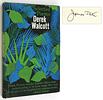 NY, Farrar Straus, (1964). The second regularly published book by the West Indian writer who won the Nobel Prize for Literature in 1992. Ownership signature of James Tate. Near fine in a near fine dust jacket, but with a chip threatening at the base of the spine.
[#033309]
SOLD
NY, Farrar Straus, (1964). The second regularly published book by the West Indian writer who won the Nobel Prize for Literature in 1992. Ownership signature of James Tate. Near fine in a near fine dust jacket, but with a chip threatening at the base of the spine.
[#033309]
SOLD
WALCOTT, Derek
 London, Jonathan Cape, (1969). First edition, preceding the American edition. Unmarked, but from the library of James Tate. Near fine in a near fine dust jacket with a couple of closed edge tears and one very small chip at the crown.
[#033310]
SOLD
London, Jonathan Cape, (1969). First edition, preceding the American edition. Unmarked, but from the library of James Tate. Near fine in a near fine dust jacket with a couple of closed edge tears and one very small chip at the crown.
[#033310]
SOLD
WARHOL, Andy
 NY, Random House, 1967. The hardcover issue of this early Warhol production. Present: the castle, the accordion (silent), the geodesic dome on a string, the Lou Reed flexi-disk, the folding nose, the Hunt's Tomato Paste can, the Warhol blotter, the Chelsea Girls spring disk (laid in, minus spring), the balloon (fused to pages), the pop-up plane (on pages tipped in). Lacking only the postcard and sponge. Minor discoloration to several pages surrounding the two pages fused by the balloon, and mild rubbing to the rear cover. Apart from the missing pieces, near fine. Roth 101.
[#027455]
$1,500
NY, Random House, 1967. The hardcover issue of this early Warhol production. Present: the castle, the accordion (silent), the geodesic dome on a string, the Lou Reed flexi-disk, the folding nose, the Hunt's Tomato Paste can, the Warhol blotter, the Chelsea Girls spring disk (laid in, minus spring), the balloon (fused to pages), the pop-up plane (on pages tipped in). Lacking only the postcard and sponge. Minor discoloration to several pages surrounding the two pages fused by the balloon, and mild rubbing to the rear cover. Apart from the missing pieces, near fine. Roth 101.
[#027455]
$1,500
WASSERMAN, Dale
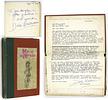 NY, Random House, (1966). An extra-annotated copy: inscribed by Wasserman, "To --- ---, a fellow quixotick -- with appreciation, Dale Wasserman, in 1968. Wasserman, who had had success on Broadway with an adaptation of Ken Kesey's One Flew Over the Cuckoo's Nest in 1963, wrote the book for Man of La Mancha which opened off Broadway in 1965 and moved to Broadway in 1966, where it won the Tony Award for best musical. Tipped into this copy is a plethora of Quixotic ephemera, as well as four typed letters signed from Wasserman. There is also a photo of a Cervantes-themed bracelet, which the recipient had sent to Wasserman, and which Wasserman mounted and photographed. The four letters span 1968-1969. In one, Wasserman notes: "It amuses me, the way The Impossible Dream has swept the world, gone into so many languages and been put to so many uses. For most often it's used wrongly, in a perversion of its meaning..." The owner has rather compulsively annotated not only the text of the book, and the added articles, reviews, and illustrations; he has also annotated Wasserman's letters. Binding broken from all the ephemera laid in. Thus a good copy, with the dust jacket absent but the jacket flaps preserved and pasted to the endpages. A unique copy.
[#033200]
SOLD
NY, Random House, (1966). An extra-annotated copy: inscribed by Wasserman, "To --- ---, a fellow quixotick -- with appreciation, Dale Wasserman, in 1968. Wasserman, who had had success on Broadway with an adaptation of Ken Kesey's One Flew Over the Cuckoo's Nest in 1963, wrote the book for Man of La Mancha which opened off Broadway in 1965 and moved to Broadway in 1966, where it won the Tony Award for best musical. Tipped into this copy is a plethora of Quixotic ephemera, as well as four typed letters signed from Wasserman. There is also a photo of a Cervantes-themed bracelet, which the recipient had sent to Wasserman, and which Wasserman mounted and photographed. The four letters span 1968-1969. In one, Wasserman notes: "It amuses me, the way The Impossible Dream has swept the world, gone into so many languages and been put to so many uses. For most often it's used wrongly, in a perversion of its meaning..." The owner has rather compulsively annotated not only the text of the book, and the added articles, reviews, and illustrations; he has also annotated Wasserman's letters. Binding broken from all the ephemera laid in. Thus a good copy, with the dust jacket absent but the jacket flaps preserved and pasted to the endpages. A unique copy.
[#033200]
SOLD
WATERS, Frank
 NY, Viking, (1963). The uncorrected proof copy in comb-bound printed cardstock covers of this landmark volume relating the worldview of the Hopis, as compiled by Waters from the tales of thirty Hopi elders. A matter of some controversy in later years -- some people questioned the authenticity of the material or the qualifications of those who provided it -- this book nonetheless was profoundly influential in the Sixties, as another of the seminal volumes bringing some version of a Native American perspective and ethos to the mainstream society: this was a counterculture classic and a staple on college campuses in the late Sixties and early Seventies, thus contributing to the general push toward a more multicultural society. Waters' father was reportedly part Cheyenne, and Waters was an ardent admirer of, and advocate for, the values of Native American culture. A bit of corner creasing and dust soiling to covers; near fine.
[#002732]
SOLD
NY, Viking, (1963). The uncorrected proof copy in comb-bound printed cardstock covers of this landmark volume relating the worldview of the Hopis, as compiled by Waters from the tales of thirty Hopi elders. A matter of some controversy in later years -- some people questioned the authenticity of the material or the qualifications of those who provided it -- this book nonetheless was profoundly influential in the Sixties, as another of the seminal volumes bringing some version of a Native American perspective and ethos to the mainstream society: this was a counterculture classic and a staple on college campuses in the late Sixties and early Seventies, thus contributing to the general push toward a more multicultural society. Waters' father was reportedly part Cheyenne, and Waters was an ardent admirer of, and advocate for, the values of Native American culture. A bit of corner creasing and dust soiling to covers; near fine.
[#002732]
SOLD
WHALEN, Philip
 San Francisco, Self-published, 1965. A handbill advocating the celebration of "Gentle Thursday," March 25, 1965, as a work-free, commerce-free day of kindness and calmness in the pursuit of "peace & quiet & liberty for all." This handbill -- in effect, a Whalen broadside -- is a scarce, ephemeral item, created by the author and reproducing his calligraphic writing. 8-1/2" x 11"; fine.
[#019388]
SOLD
San Francisco, Self-published, 1965. A handbill advocating the celebration of "Gentle Thursday," March 25, 1965, as a work-free, commerce-free day of kindness and calmness in the pursuit of "peace & quiet & liberty for all." This handbill -- in effect, a Whalen broadside -- is a scarce, ephemeral item, created by the author and reproducing his calligraphic writing. 8-1/2" x 11"; fine.
[#019388]
SOLD
WHALEN, Philip
(San Francisco), [Four Seasons Foundation], 1963/(1964). A broadside poem reproduced by photo-offset from the author's own calligraphy and printed in an edition of 300 copies on the occasion of a reading by Whalen, Gary Snyder and Lew Welch at Longshoreman's Hall, San Francisco, June 12, 1964. Signed by the author. 9-1/2" x 12-1/2". Faint edge sunning; else fine.
[#029744]
SOLD
WILDER, Thornton
 NY, Harper, (1967). The three-time Pulitzer Prize-winning (Our Town, The Skin of Our Teeth, The Bridge of San Luis Rey) author's National Book Award winning novel. Inscribed by the author: "For JEAN and WALTER with deep regard and affection ever/ Thornton/ March 21, 1967." As with at least three other copies of this title that Wilder inscribed, the recipients' names are in large block letters, while the bulk of the inscription is in Wilder's small cursive. We do know that Wilder was in New York on the date of this signing, and that he had reason to behold the Pulitzer Prize-winning critic Walter Kerr and his wife, the writer Jean Kerr (of Please Don't Eat the Daisies fame) with deep regard and affection: Walter Kerr lauded Wilder's work repeatedly in the 1960s, from his off-Broadway work ("the very special voice of Thornton Wilder...the homely, jaunty, gently poetic sound of it..."), to the cultural phenomenon that was Hello, Dolly!, which was based on Wilder's The Matchmaker. Fine in a fine dust jacket. A gorgeous, inscribed copy of a National Book Award winner.
[#030149]
SOLD
NY, Harper, (1967). The three-time Pulitzer Prize-winning (Our Town, The Skin of Our Teeth, The Bridge of San Luis Rey) author's National Book Award winning novel. Inscribed by the author: "For JEAN and WALTER with deep regard and affection ever/ Thornton/ March 21, 1967." As with at least three other copies of this title that Wilder inscribed, the recipients' names are in large block letters, while the bulk of the inscription is in Wilder's small cursive. We do know that Wilder was in New York on the date of this signing, and that he had reason to behold the Pulitzer Prize-winning critic Walter Kerr and his wife, the writer Jean Kerr (of Please Don't Eat the Daisies fame) with deep regard and affection: Walter Kerr lauded Wilder's work repeatedly in the 1960s, from his off-Broadway work ("the very special voice of Thornton Wilder...the homely, jaunty, gently poetic sound of it..."), to the cultural phenomenon that was Hello, Dolly!, which was based on Wilder's The Matchmaker. Fine in a fine dust jacket. A gorgeous, inscribed copy of a National Book Award winner.
[#030149]
SOLD
WOIWODE, L.
 NY, Farrar Straus Giroux, (1969). The advance reading copy of his highly praised first novel, which went into numerous printings immediately after publication and which won the William Faulkner Foundation Award. This copy is inscribed (by the publisher?), "For John & Joan [Didion] Dunne." Woiwode and Didion were judges together for the 1972 National Book Awards. Spine creasing and a heavy front cover crease; minor foxing to the edges of the text block; good in wrappers.
[#033360]
SOLD
NY, Farrar Straus Giroux, (1969). The advance reading copy of his highly praised first novel, which went into numerous printings immediately after publication and which won the William Faulkner Foundation Award. This copy is inscribed (by the publisher?), "For John & Joan [Didion] Dunne." Woiwode and Didion were judges together for the 1972 National Book Awards. Spine creasing and a heavy front cover crease; minor foxing to the edges of the text block; good in wrappers.
[#033360]
SOLD
WOLFF, Geoffrey
NY, Simon & Schuster, (1969). His first book, a novel. Inscribed by the author to noted author John Hopkins in the year of publication. Mild foxing to endpages and page edges; near fine in a dust jacket with a corner creased on the front flap, else fine.
[#026176]
SOLD
ZINN, Howard
For notifications of our sale lists, new arrivals, new catalogs, or other e-lists, subscribe to our email list:
